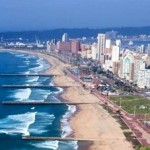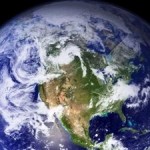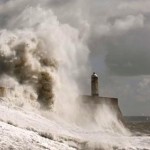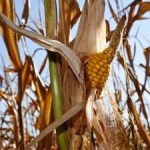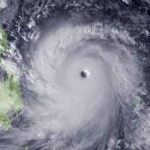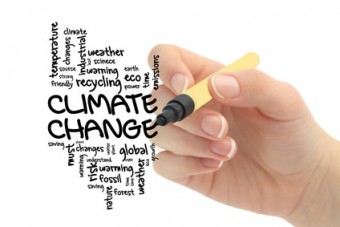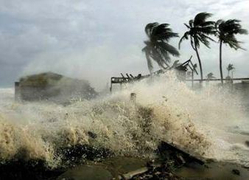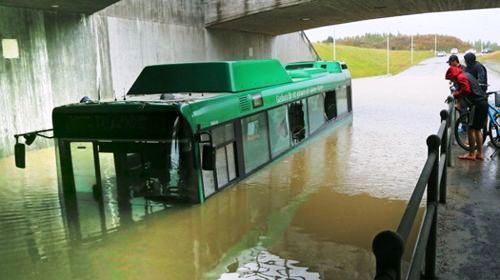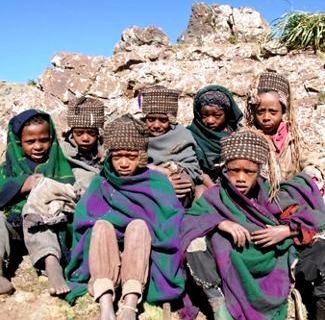 Doha, Qatar – Island communities in the Pacific Ocean are facing unprecedented challenges to their economies and environment from the impacts of climate change, according to a new report released at the United Nations Climate Change Conference in Doha, Qatar.
Doha, Qatar – Island communities in the Pacific Ocean are facing unprecedented challenges to their economies and environment from the impacts of climate change, according to a new report released at the United Nations Climate Change Conference in Doha, Qatar.
Sea level rise, tropical cyclones, floods and drought, combined with pressures from unsustainable fishing practices and coastal development, and consumption and production trends, are rendering the livelihoods of some 10 million people increasingly vulnerable, says the study.
Low-lying islands in particular could face projected losses of up to 18 per cent of GDP due to climate change.
The report recommends actions to enforce legislation, improve the availability of environmental data, and strengthen environmental institutions to help meet the major climate change challenges facing the Pacific region.
The study highlights successful efforts to create community-managed conservation areas, such as marine parks, which have used indigenous knowledge to improve recycling, energy efficiency and sustainable water use. Such techniques can be scaled up, and serve as a model for other regions, says the report.
Due to low greenhouse gas emissions and the sustainable management of the region’s forests – often by local communities – some Pacific islands could see net uptakes of CO2 from the atmosphere in the future.
The “Pacific Environment and Climate Change Outlook” was prepared by the Secretariat of the Pacific Regional Environment Programme (SPREP) in partnership with the United Nations Environment Programme (UNEP) and other organizations.
Covering 21 countries and territories, mostly small, low-lying island communities, the report provides a detailed assessment of the state of the Pacific environment, and lays out policy options for improving sustainable development in island communities. The experiences of over 500 communities are included in the study.
“This report presents concrete evidence that food, freshwater and the livelihoods of Pacific islanders are under threat, and that the Pacific is at the fore-front in humanity’s efforts to combat and adapt to climate change,” said UN Under-Secretary-General and UNEP Executive Director Achim Steiner.
“Enhancing local capacity to directly monitor, and manage, the impacts of the region’s changing environment is essential for reducing climate risks, but also for unlocking the potential economic benefits that a transition to an inclusive, low-carbon and resource efficient green economy can bring,” said Mr. Steiner.
State of the Environment and Regional Trends
The report highlights a severe shortage of data relating to environmental change in Pacific islands. Nevertheless, several key environmental trends are emerging across the region:
Land
- Housing, food and other needs of growing population are placing limited land resources (land mass accounts for only 2 per cent of Pacific region) under intense pressure
- Severe loss of mangrove forests, but region saw a net gain in forest cover between 2000 and 2009
- Organic and chemical waste (e.g., from mining) has become a major problem for both land and sea
Biodiversity
- 80 per cent of alien species in the Pacific are invasive or potentially invasive
- 60 per cent of reptiles, 21 per cent of mammal species, and 13 per cent of birds assessed in report are considered threatened (based on IUCN Red List)
Freshwater
- Availability of freshwater varies highly, but demand is rising across the region
- Leakage in water systems affects up to 50 per cent of water supply
- Water conservation practices (e.g., rainwater collection) have not been taken up widely
Fisheries
- Main commercially-exploited species are reaching limits of sustainable harvest
- Catch of four main tuna species increased tenfold between 1960 and 2009
- Use of Locally Managed Marine Areas now involves over 500 communities and is being extended to terrestrial areas
Coral Reefs and Marine Environment
- Climate change and ocean acidification contributing to degradation of coral reefs
- Important economic impacts as reefs provide major source of revenue from tourism and fisheries
- Plastics (including marine litter) are a priority pollution threat
 Drivers
Drivers
The Pacific Environment and Climate Change Outlook stresses that efforts to build climate resilience need to go hand-in-hand with actions to tackle other causes of environmental degradation.
Policy responses should seek to address such ‘drivers’ of environmental change, and not simply react to their effects.
Among the main drivers for the Pacific region listed in the report are:
- Population Growth: The population of the Pacific region grew at an annual rate of over 3 per cent between 1990 and 2011, with many urban areas growing at twice the national rate.
- Exploitation of Natural Resources: Increased interest in mining activities could lead to more frequent disputes on land use, as well as the shift from subsistence farming towards cash crops such as palm oil.
- Climate Variability: Extreme weather events, coupled with low land elevation and concentrated coastal populations, mean communities in Pacific islands are particularly vulnerable to the impacts of climate change, with lower capacity for emergency response.

